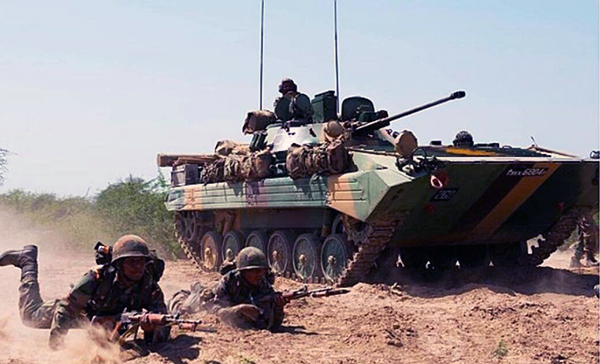Chief of Army Staff General Manoj Pande, on 9 May, said the Army is fully committed to the tri-services theaterisation plan and is even ready to take the lead to make the ambitious initiative a success. He said the Army is in the final stages of completing the studies on the theaterisation plan, adding that there are certain issues among the three services that need to be addressed.
According to the plan, each of the theatre commands will have units of the Army, the Navy and the Air Force and all of them will work as a single entity, looking after the security challenges in a specified geographical territory under an operational commander.
“This exercise is in progress. While there are areas of convergence and common understanding among the three services, there are some issues that still need to be addressed. That I suppose will have to be taken up for resolution at the appropriate level,” General Pande said.
The Department of Military Affairs headed by the country’s first Chief of Defence Staff, General Bipin Rawat, had asked all the three services last year to carry out independent studies on the theaterisation plan for its rollout.
“In so far as the studies which the Army was required to undertake for the land theatre commands, these are in the final stages of completion and will be submitted in due course,” General Pande said.
“But at the end of it, I must reiterate the Indian Army’s commitment towards achieving this objective of theaterisation. I would want to state our full commitment and that we are prepared to sort of cooperating and taking the lead in any manner towards making theaterisation a success,” he added.
At present, the Army, the Navy and the IAF have separate commands. Initially, a plan was firmed up for the creation of an Air Defence Command and a Maritime Theatre Command.
The theatre commands are being planned to integrate the capabilities of the three Services and ensure the optimal utilisation of their resources.
Integrated Battle Groups
The Indian Army is in advanced stages of putting together Integrated Battle Groups (IBGs) by reconfiguring its combat formations.
General Pande said the plan is to have one in the northern sector and another on the western front. “It is in the final stages of compilation,” he said.
“Consultations with all stakeholders are more or less formalized and are now in the process of final compilation. Once this happens, we will see how we can take this forward and apply to perhaps other formations of the Army,” the Army Chief said.
The IBG, which aims to integrate different components of the Army into the new formation, will include artillery guns, tanks, air defence and logistical elements.
“The purpose of restructuring our existing formations was to have forces which are lean, agile and tailor-made that would afford the commanders the flexibility and more options for their deployment,” the Chief of Army Staff said.
The IBGs add punch to the ground forces by combining the strengths of each formation. The Army has already carried out extensive test-bedding of the IBG concept.
“We have identified a holding formation on the western front and a strike formation in the eastern or northern borders for the IBGisation to commence,” said Gen Pande.
Once IBGs are rolled out, these will be comparatively smaller formations but will be able to execute their operations swiftly. They will add to the options of the theatre commanders. The IBGs will be bigger than a brigade (3,000-3,500) but smaller than a division (10,000-12,000).
In the first go, of the two IBGs planned, one is coming up under the 9 Corps mandated to operate on the western borders with Pakistan.
The other one is being raised under the 17 Corps raised as the sole strike corps to operate along the northern borders with China.











